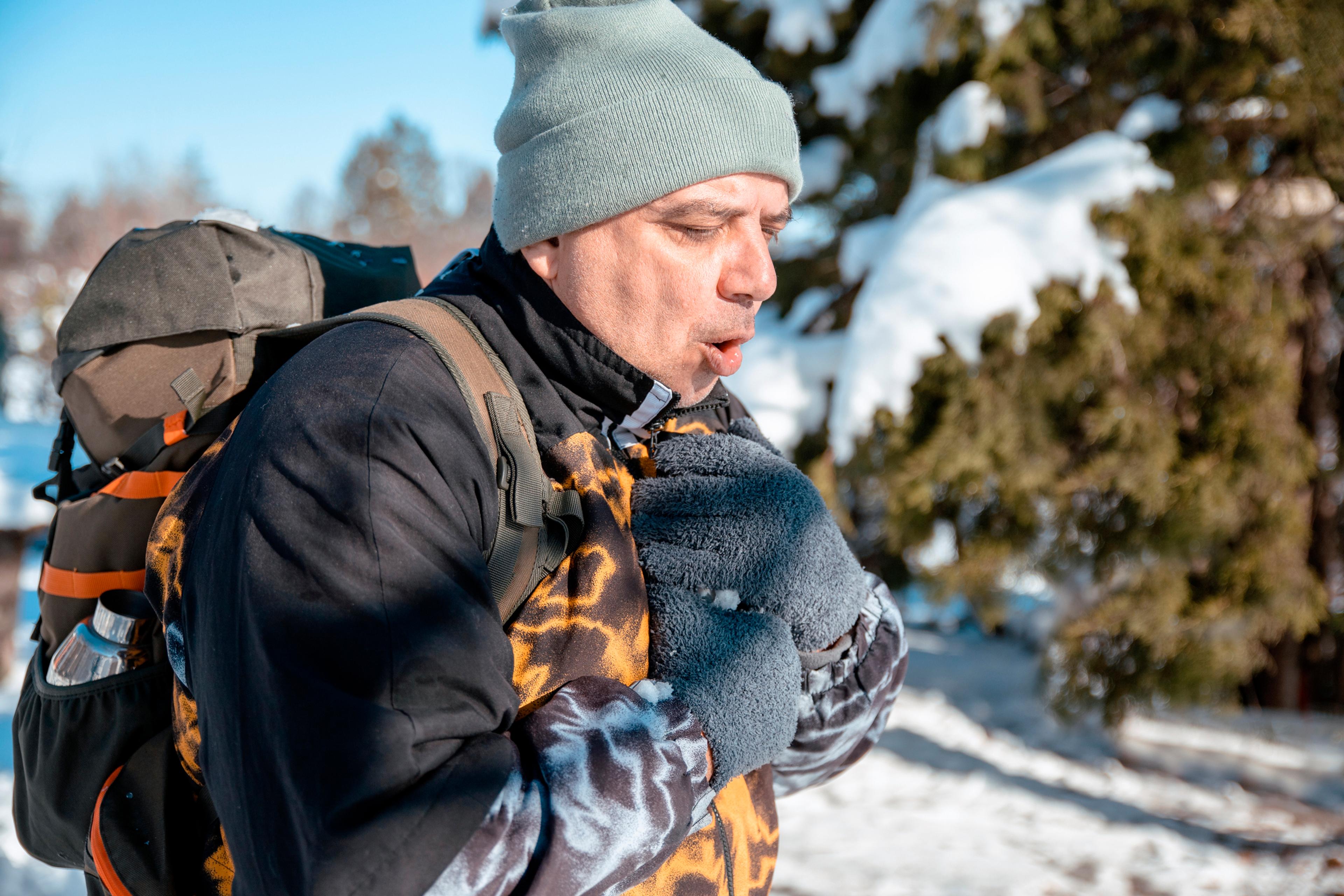How Cold Weather Affects the Lungs
Amy Barczy
| 3 min read
Amy Barczy is a former brand journalist who authored content at Blue Cross Blue Shield of Michigan. Prior to her time at Blue Cross from 2019-2024, she was a statewide news reporter for MLive.com. She has a decade of storytelling experience in local news media markets including Lansing, Grand Rapids, Holland, Ann Arbor and Port Huron.

More than 37 million Americans live with a chronic lung disease like asthma or COPD. For many people with respiratory issues, cold weather during the fall and winter months can trigger flare-ups, cause breathing difficulties and make the airways more sensitive.
Cold air is dry air
Cold weather is an issue not because of the cold temperatures itself. The issue is the moisture content: cold air tends to hold less moisture than warm air. Dry air can aggravate the lungs for those with and without respiratory diseases or issues.
Escaping the dry air in the winter can be difficult: often indoor air is incredibly dry, as we crank up the thermostats to combat the freezing temperatures outside.
Cold, dry air can affect the lungs in several ways. For individuals with chronic lung disease, it can irritate their airways and cause coughing, wheezing and shortness of breath.
It can also dry out the mucus in your sinuses – which is an issue for people with and without chronic lung disease. Mucus plays an important role in the body:
- It filters the airways
- Keeps the nasal cavity and lungs moist
- Acts as a natural defense against infection
But when the mucus in your sinuses dry out, the body may overcompensate and produce even more mucus. The cold air entering the nose can also cause the vessels in your nose to expand and stimulate more mucus production. This is why after you come in from being outside in the cold, you often have a runny nose.
When mucus dries out, the body is also vulnerable to infections – which could be a bigger health risk to people with chronic breathing problems. Increased mucus production can also increase congestion and worsen other respiratory symptoms in people with chronic breathing problems.
Risks for people with asthma and COPD
Cold weather is a common asthma trigger. The cold air outside can cause the airways in your body to swell up – making them narrower. This makes it harder for air to pass through to the lungs. The cold air can also cause the muscles in the body to tighten up and clamp down, also preventing air from passing through. People with asthma have sensitive bronchial tubes that can be easily irritated, resulting in asthma symptoms like coughing, wheezing and shortness of breath.
People with COPD, or chronic obstructive pulmonary disease, may experience lung spasms as a result of cold air exposure – which may feel similar to an asthma attack.
For people living with chronic lung diseases, talk to your health care provider about how to manage your conditions during the cold weather months.
How to protect your lungs in cold weather
- When going outside, loosely wrap a scarf around your nose and mouth. This warms the air before it enters your lungs. Be sure to breathe in through your nose and out through your mouth. Make sure the scarf is comfortable against your skin.
- Dress warmly in layers to insulate the body and trap warm air.
- Air pollution can increase in the winter months. If you’re sensitive to air pollution, monitor the air quality forecasts before going outdoors.
- Always take your medication as prescribed by your health care provider.
- Always keep quick-relief medications with you, especially if you have asthma or COPD. If you are experiencing symptoms of asthma or COPD, immediately rest and take your quick-relief medicine as soon as you can.
Photo credit: Getty Images





